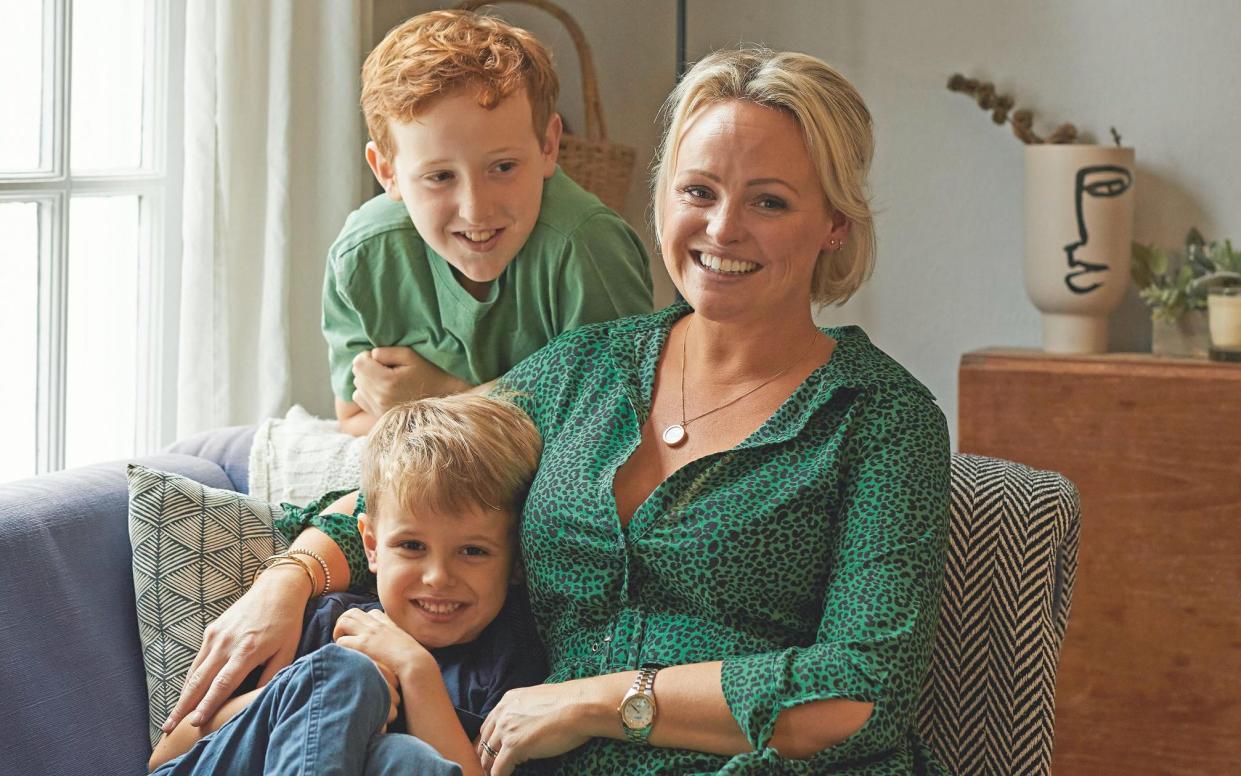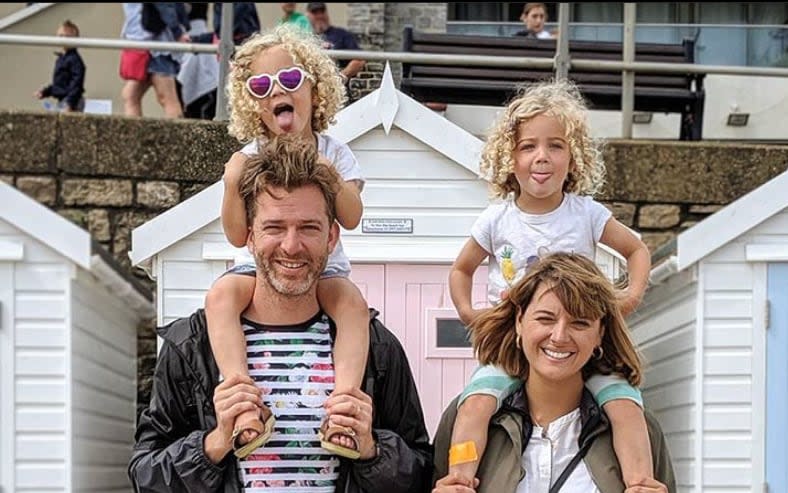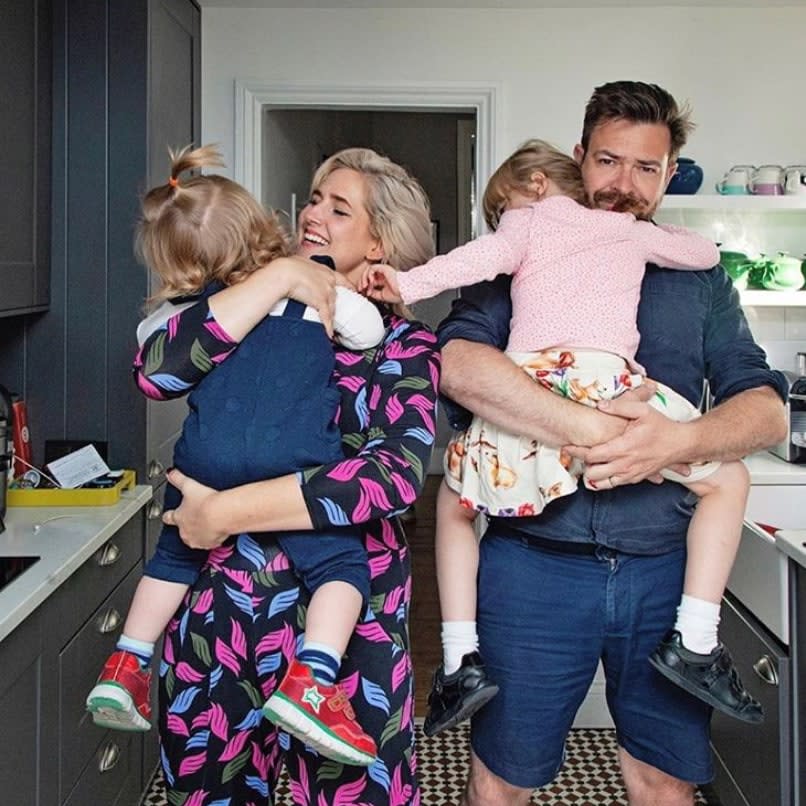‘Leaving the “mumfluencer” world was liberating’


Lockdown saw many of us try something new (Zoom quiz, anyone?), but for Laura Rutherford, 37, it marked the end of her all-consuming five-year love affair with Instagram. Suddenly at home with her husband Tye and two sons, Harry, 11, and Stanley, six, Laura felt like someone had hit pause on her busy life, which was usually spent ‘creating content’ out of a diary packed with events, product launches and family days out.
As @thatmummysmile, Laura had built up a following of 24,000 people, and posted pictures of everything from cocktails, World Book Day outfits and spa breaks to messages of support to mums struggling with their mental health. But away from the grid and Laura’s distinctive smile, her own mental health was failing – and she didn’t realise it until lockdown brought her some breathing space.
‘Social media became really, really quiet,’ recalls Laura, ‘Nobody was doing any adverts, nobody was getting paid. There was no content to be had because everyone was doing the same thing, stuck in the house with their kids. It gave me time to reflect. I’d thought about quitting a couple of times before, but the work and the opportunities were just too tempting so I kept going. When that dried up, I suddenly thought, “I don’t need this. This is my way out.” It was liberating.’
For those who aren’t aware of the ‘mumfluencer’ world, a quick potted history: socalled mummy blogs started in the early 2000s and quickly became popular with parents looking for reassurance and shared experiences of fussy eaters, loneliness and buggy-friendly days out. Once Instagram launched, many bloggers – Laura included – started using the photo-sharing platform as their online hang-out instead. It was soon awash with people posting the highs and lows of #mumlife, with big hitters such as Clemmie Hooper (@motherofdaughters), Anna Whitehouse (@motherpukka) and Zoë de Pass (@dresslikeamum) building up audiences numbering hundreds of thousands, as well as book deals, podcasts and merchandise lines. Influencers seemed to offer the perfect solution to brands – a personal recommendation saw products flying off the shelves. It was a win-win, fuelled by hashtags and Instagram stories.
Laura started her blog when her younger son Stanley was a baby. ‘At first, it was just an online diary of our family life,’ she says. ‘I was probably two years into it when it switched from being a hobby to something more serious. I got involved with Mothers Meetings, which were an opportunity to meet other influencers, although nobody was calling themselves that. We were just mums with a blog.’
Going to those events opened Laura’s eyes to what was possible. She met women who were earning money for mentioning brands, while enjoying a giddy whirl of freebies and kid-friendly events. Enticed by the flexibility of the influencer lifestyle and the lucrative contracts on offer, she decided she wanted in.
‘For six months, I googled PR companies, sending emails trying to get my name out there, looking for opportunities. I asked to be put on their mailing lists for product launches and events, so that I would have things to write about and talk about. Really, it’s all about trying to get content.’ And it worked. Laura’s profile gradually grew and soon she found herself at events, mingling with journalists, celebrities and big-name influencers. She secured work with brands such as Dove, Next, Marks & Spencer, Sky mobile and Asda, and within a couple of years, she was out-earning her previous career in fashion buying.
‘I started off being paid around £100 for a post on Instagram and then towards the end, I was signing contracts for £1,500. That would be for two posts on my grid and a couple of stories. I figured that if I could get two jobs a month, that’s a really comfortable salary for me.’ But it came at a cost.
While Laura established a circle of genuine influencer friends, she found the competitive side of the industry tough to deal with. ‘There was a hierarchy,’ she explains. ‘You had Clemmie Hooper and Anna Whitehouse at the top; they were the ones you wanted to emulate because they had all the jobs and money.’
In 2018, Laura found herself embroiled in an online spat about her entitlement to social housing (she grew up in and continues to live in social housing in Notting Hill.) A pile-on ensued.
‘I got trolled for a good six months. It was awful, but also bittersweet because I gained around 6,000 followers in just a couple of days.’

After that, Laura became aware of Tattle Life, an online forum where anonymous users vent against celebrities and influencers.
‘Everyone says don’t read it but you do. And it’s an awful feeling – it’s upsetting and intrusive, and the majority of it is from other women and mothers. You can’t make sense of why people would be so nasty and judgmental.’
As someone with a long-term history of depression, Laura says the trolling was catastrophic for her mental health. Then came the Clemmie Hooper scandal.
Last year Clemmie was outed for anonymously criticising other mummy bloggers on Tattle Life, and Laura was among them. In this supposedly supportive corner of the internet, Clemmie’s admission to trolling her peers was, says Laura, ‘like a bomb going off’, and while many kept quiet, she shared her disgust publicly on Instagram, which was picked up in the national press.
Laura says that it shook her trust in others. ‘It brought to light how fickle this industry can be. Everyone was in shock. It completely tainted it because she was such a big name and she upset so many people on a really personal level. You could almost hear the cheering on Tattle… It was vindication for them as they’d always accused the clique [of Instamums] of being fake.’

The drama marked the start of Laura falling out of love with Instagram. In the shadow of the scandal, she grew tired of keeping it fed and watered with daily updates and posts. ‘Looking back now, I can see how much it consumed me and it wasn’t healthy. I was constantly thinking about my competition and my peers, thinking, “How did she get that ad? Why didn’t I?” You second-guess everything, wondering if there’s an event coming up that you haven’t been invited to. I’d have periods of being totally fine, but then one small comment would play on my mind and put me into a downward spiral.’
So when lockdown arrived, she made the decision to delete the app and ‘slip away’.
‘It was like going cold turkey,’ she recalls. ‘For a week I had withdrawal symptoms. I was waking up and constantly thinking that I needed to post something. I was 100 per cent addicted to it – and you don’t realise that when you’re in it. Only now that I’m out can I see how toxic it could be.’
Was it hard to step away from the money?
‘Not really, no. I just thought, “I’m done with this now.” It had become a chore. Nobody really believed I would stick to it, but I did. And my head completely cleared as a result. I was enjoying life for what it was and not for photograph opportunities.’
A post shared by l a u r a r u t h e r f o r d (@laura_rutherford_) on Aug 4, 2020 at 3:11am PDT
With Clemmie gone and Anna having changed presence on the platform after revealing her personal mental-health struggles, other prominent names have reduced their posts or stopped showing their children’s faces. So will the mumfluencer juggernaut continue?
CJ Brough, a social-media consultant for brands, thinks so: ‘Audiences definitely grew a bit sick of seeing the same people at all these free lunches. But the great thing about social media is that the moment something becomes tired, we can just move on. If anything, brands are putting even more money into social media, and there is fresh talent coming through all the time.’
Parenting blogger and podcast host Alison Perry (@iamalisonperry) agrees: ‘There are new people appearing on Instagram all the time with interesting things to say. The world has changed in the past couple of years and given what’s gone on politically, it would seem quite vacuous to have the same group of people still posting photos of their latest night out together.
‘Those women were the first wave of the mumfluencers. We got to know them, we felt like we were part of their gang. But as time went on, some lost their relatability. It’s hard to relate to someone renovating their enormous home and appearing on M&S billboards, like Clemmie Hooper was. Now you have to have something to offer – whether it’s fun or serious, people just expect more.’
Laura now works in a nursery and while she intends to keep her blog going, she says days spent checking likes and numbers are now firmly behind her. So does she regret the time and energy she ploughed into pursuing the influencer dream? ‘No. Sometimes it’s too easy to criticise mummy bloggers, but what came along was a chance to earn money in a way that fitted in with their kids. I was doing something for myself and that’s a really empowering feeling. I wouldn’t change it, but I’m so thankful that I’m on the other side of it.’


